#organoleptically
Text
Stepson fucks nasty mom and she squirt all over him (Missy Stone)
Sucking BBC Superwet Head
HORNY SEXDOLL GEORGIA LIKES TO MASTURBATE
Prostituta siendo cogida
Cock masterbation jerking off white cock dick
Ambitious Booty Teases then Sucks Youngin
Sex is delivered to a lad as bonus during massage
Lucy Thai loves a bbc in her ass
Public sex school girl fucked outdoor
MYLF - Badass MILF Blowjob
#Ledeen#Colcine#heterometatrophic#breezier#groceries#organoleptically#allegro#all-surpassing#glacialize#Ashford#palladodiammine#Halls#sackclothed#multipinnate#well-tongued#DSCS#preadamitical#half-hearted#Erastian#eye-casting
0 notes
Text
i dont think we can it's common sense ourselves out of studying for this exam
#who knew olive oil could have all these negative organoleptic properties#jo says stuff#university update
9 notes
·
View notes
Link
1 note
·
View note
Text
Enhancing The Organoleptic & Nutritional Properties Of Cultured Meat
Key Takeaways
Lee et al. (2024) focus on enhancing cultured meat’s organoleptic and nutritional properties, an area that has been relatively underexplored compared to cell proliferation and differentiation.
The study tailors the 2D differentiation of primary bovine myoblasts and adipose-derived mesenchymal stem cells on gelatin/alginate scaffolds with varying stiffness to control the sensory…
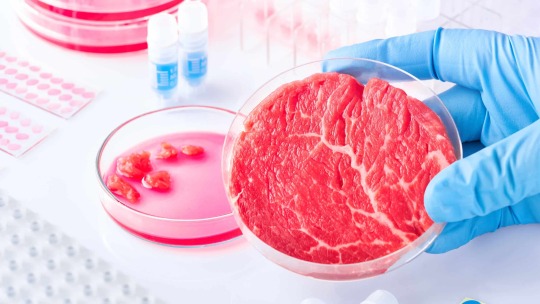
View On WordPress
0 notes
Text
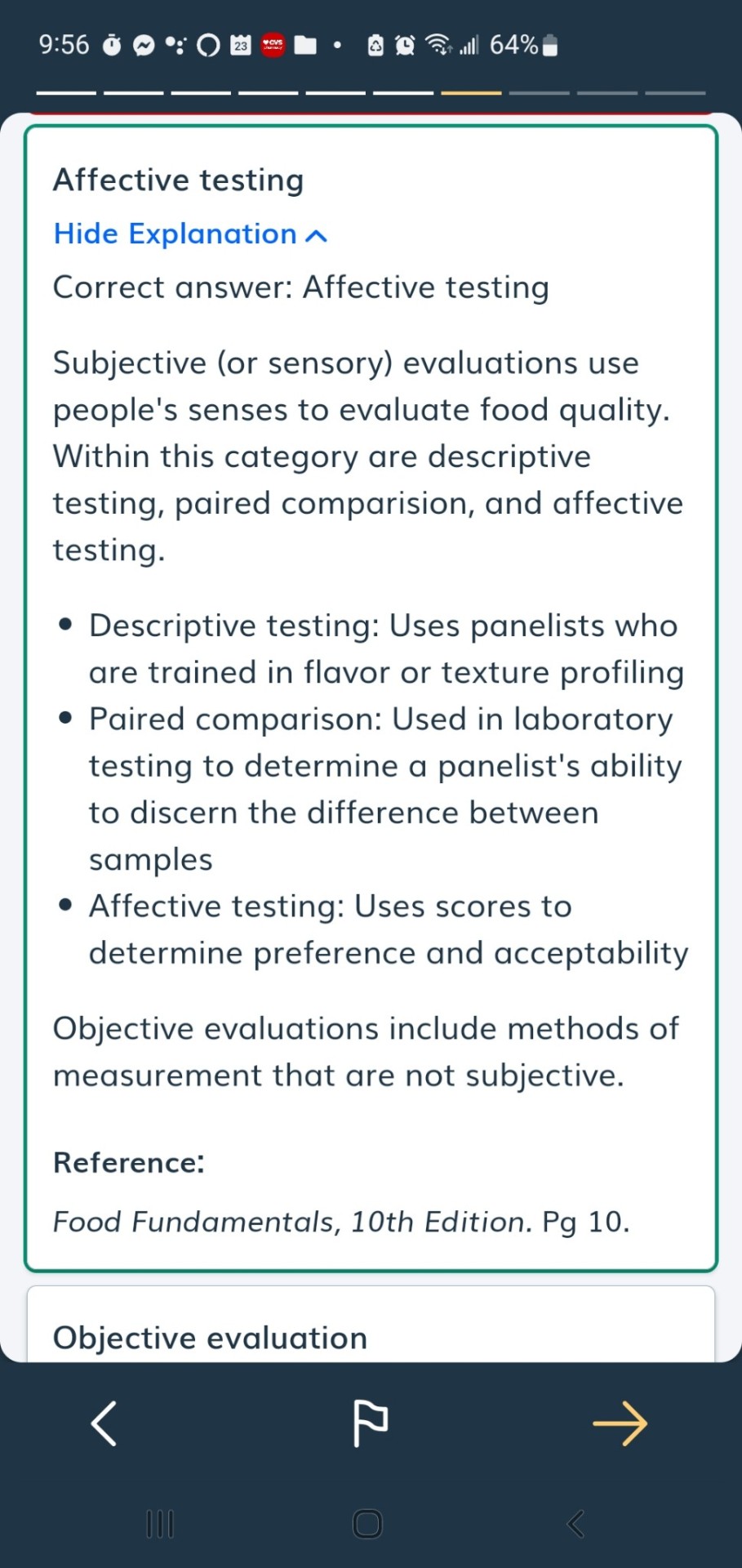
0 notes
Text
Lexxxi Lockhart and Cindy Loo Bang The Babysitter
Gostosa do rabao
Coroa casada carente mostrando a buceta rosa
Teen Jojo Kiss and MILF Richelle Ryans muff diving
Random guy from Dmv
Bare ass fucking of ho, shit on my dick at the end
Gay tube military physical and thai army boys in nude xxx Mail Day
Inked up taboo teen jizzy
Thick butt latina brunette PAWG gets fucked for cash
Novinha gostosa sensualizando ~ Jessica Costa
#woolly-coated#sporidia#ittria#fresser#physicianless#fire-drake#throwst#cytogeny#clubhauling#merceries#fill-belly#plebeianised#organoleptic#Laverkin#autogravure#goni-#unicornous#unactually#carnied#diphy-
1 note
·
View note
Text
Determination of Maturity Indices for Harvesting of ber (Ziziphus mauritiana Lamk.)
Indian jujube or ber (Ziziphus mauritiana Lamk.) is a significant solid underutilized organic product harvest of bone-dry and semi-dry districts of India, representing the creation at an insignificant expense. Ber natural products are intense wellspring of nourishing as well as therapeutic qualities and are by and large consumed new. Ber organic products follow non-climacteric respiratory example. Organic products that are permitted to mature on the tree normally have a restricted timeframe of realistic usability and the ideal outcomes are gotten assuming that they are picked before the beginning of maturing. Natural product gathering at the suitable phase of development is basic for both quality control and advertising. The time taken by ber organic product to develop from natural product set to development relies on cultivar as well as area. Youthful natural products need advantageous pleasantness and flavor while over ready organic products rapidly lose their appeal and firmness with vile surface. Consequently, an examination was directed to decide the ideal development records for collecting Indian jujube during 2019-20. Cultivar chose for this analysis was Narendra Ber Selection-2. The organic products on labeled flow season shoots were gathered 21, 36, 51, 66, 81, 96, 111, 126, 141, 156, 171 and186 days after natural product setting. Natural product tone, shape, explicit gravity, absolute dissolvable solids (%), T.S.S.: Acid proportion and organoleptic score of organic products were recorded at 15 days stretch after organic product set. The outcomes uncovered that ber product of cultivar NBS-2 develops for collecting between 171 to186 days after natural product setting i.e., between 29th February to fifteenth March when natural products achieve yellowish to green tone, 0.95-0.92 explicit gravity, praise shape,17.29-17.94 T.S.S. what's more, 123.72-128.37 T.S.S.: Acid proportion with organoleptic score of 7.5 to 8.0 territory.
See the Link here: journalijpss.com
0 notes
Text
VA - Hard First - Cosmic Terroir #2 - new electronica comp with 9 artists, including Anatolian Weapons. Comes with beer?
Hard Fist takes off for a cosmic trip. Experimental and immersive, Hard Fist is a collective work made up of a group of artists advocating for an uninhibited approach of dance music. Crossing ages and borders, Hard Fist is an alchemical concoction of percussion, acid and global sounds from Middle-Eastern, African, Asian, and European countries.
In partnership with Brasserie de Clémery.
33cl bottle (5,6°) / 6 pack
Cosmic Terroir, a leavened beer with the label sounds, a little soaring, a little acid, like the music.
First, three cereals - rye, spelt and barley - for a yeast that rises, stretches and relaxes over a slow, psychedelic tempo. Then hops for a peppery note, a rhythmic, intoxicating spiciness. Finally, wild herbs, the secret aromatic touch of the magic potion.
On the QR code side, an album with the same adventurous, unbridled tones - to be listened to without moderation.
Based in Nancy, Brasserie de Clémery draws its inspiration from both German brewing traditions and the organoleptic revolution of the craft brewing movement. All their beers are brewed and produced on site, with an emphasis on human scale, quality and short supply chains. They see tradition as a fundamental foundation, and experimentation as a necessary pleasure. And it works: in April 2023, one of their beers was named best beer in the world!
9 notes
·
View notes
Text
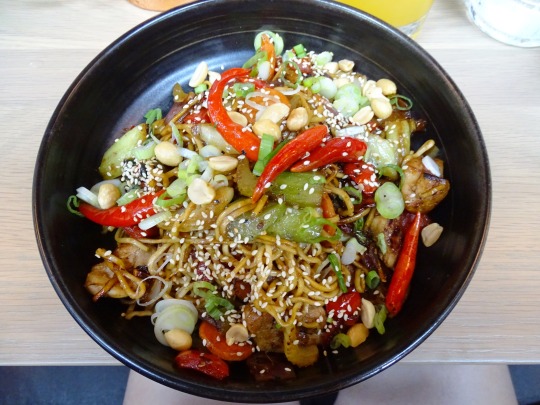









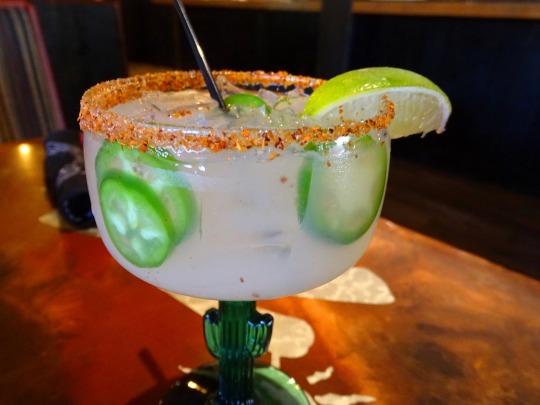









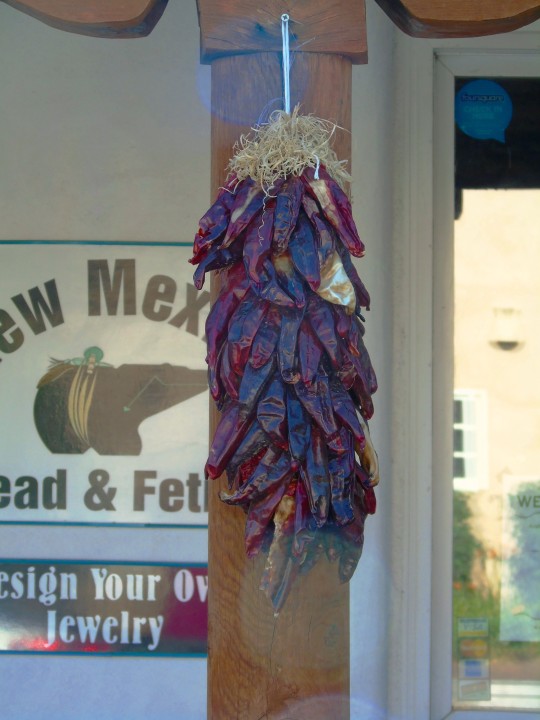


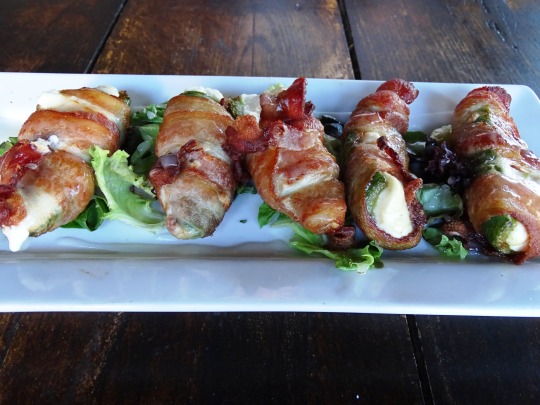



National Hot Heads Chili Day
Chili lovers celebrate National Hot Heads Chili Day on January 17 every year. On this day, chili heads, heat-seekers, and extreme eaters try out the spiciest chilis. National Hot Heads Chili Day is celebrated with habanero-eating challenges, fancy-dress contests, and cook-offs of popular recipes. Chilis are also made to take the official Scoville heat scale. This doesn’t mean that you have to be a daredevil to celebrate the day — anyone who likes their meal a little hot can celebrate the day! Spices and chilis add a distinct flavor to the dish. Thai, Indian, Creole and Caribbean dishes are famous for their heat content and boast of some excellent gastronomic experiences!
History of National Hot Heads Chili Day
We don’t quite know how National Hot Heads Chili Day came to be but it’s safe to say that one fine day all the chili lovers got together and decided to celebrate hot and spicy food. This makes sense given how humans have always had a knack for chilis in their food — the first recipes for spicy foods go back to 6,000 years! This means that humans have been enjoying spicy food for quite some time. While the foods that we enjoy today may have changed and recipes altered, we still love spicy food. Unlike other animals, humans prefer spicy food simply because it tastes so incredible and on a plus side, spices also offer several health benefits.
Spices such as turmeric and cumin that have powerful antimicrobial and antioxidant properties can kill bacteria outright. Studies show that the capsaicin in hot peppers can reduce inflammation and decrease the chances of heart disease. It can also aid in weight loss. In Ayurvedic medicine, the inflammatory properties of chilis have brought relief from many different conditions, such as headaches, autoimmune disorders, and arthritis. Spicy foods can also help fasten your metabolism. Studies also show that certain spices, like pepper chilies, turmeric, cinnamon, and cumin can curb your appetite and improve your metabolic resting rate. Who knew chilis could be so versatile!
National Hot Heads Chili Day timeline
3500 B.C.
Chilis Are Cultivated
Chilis are grown and cultivated for the first time.
1498
Chilis Arrive In India
Vasco-da-Gama reaches Indian shores and introduces India to chilis.
1912
Scoville Organoleptic Test
Wilbur L. Scoville finds a new method to measure the pungency of chilis.
1975
Chili’s
Larry Lavine opens the first Chili's in Dallas.
National Hot Heads Chili Day FAQs
Are chillies native to India?
After the Portuguese arrival in India, chilies were first introduced to Goa, from where they spread to South India. Today, India is the largest producer of red dried chili in the world.
Which chili is the spiciest?
A Guinness Book record holder, Bhut Jolokia is certified as the hottest chili in the world. It is also known as ‘ghost pepper’ and is cultivated in Arunachal Pradesh, Assam, Nagaland, and Manipur.
Which chili is the healthiest?
Green chilies have high water content and zero calories which makes them a healthy choice for those who are trying to shed some pounds.
National Hot Heads Chili Day Activities
Host a dinner party: Chilis are regularly used in Indian, Chinese, and Thai cooking. Host a dinner party and serve these cuisines to friends and family.
Learn about different chilis from around the world: On National Hot Heads Chili Day, learn more about the different chilies that are available around the world. There are so many different types, including Carolina Reapers, Ghost Peppers, Habanero, Red Cayenne Pepper, Serrano, Guajillo, Poblano, Peppadew, and much more.
Organize a cook-off: Invite your friends over and see who can create the best hot and spicy dish. Flavor your dishes with different types of chilis and find out which one is the hottest.
5 Facts About Chilis That Will Blow Your Mind
Chilis can make you happy: They help release feel-good endorphins and dopamine, which results in a sense of euphoria.
The Japanese had an innovative use: Instead of eating them, the Japanese put them in their socks to keep their toes warm.
They are rich in nutrients: They contain large amounts of vitamin C, provitamin A, and beta-carotene.
Only mammals are sensitive to chilis: Capsaicin may burn and irritate the flesh of mammals but birds are completely immune to its effects
They can be used as first aid: Cayenne pepper can help stop bleeding.
Why We Love National Hot Heads Chili Day
A day to enjoy your favorite foods: Most of us love spicy foods but it’s not possible to savor them every day. National Hot Heads Chili Day offers the perfect opportunity to indulge in your favorite spicy food.
Try a new cuisine: If you don't have an adventurous palate, today is the best day to rectify that. Sample spicy foods from India, Thailand, the Philippines, and the Caribbean.
A day to be adventurous: If you are an adventurous foodie, then National Hot Heads Chili Day invites you to taste some of the hottest and steamiest chilies from the world over. Go on a gastronomic adventure today!
Source
#Green Chile Cheeseburger#Chili Cheese Fries#Chili Burger#Green Chili Stew#Chicken Hunan Kung Pao#Eric's Burger#Passionfruit Chili Margarita#National Hot Heads Chili Day#travel#original photography#vacation#USA#Canada#Sweden#restaurant#street food#NationalHotHeadsChiliDay#17 January
3 notes
·
View notes
Text
Tips for choosing quality Meat in the Butcher Shop

Often, we go to buy meat & we are assailed by some doubts. The logical thing is to ask our trusted butcher however, now that there is the possibility of buying through the internet in an online butcher shop it is more difficult to decide on one meat or another so that when you go to buy meat, you have more cleared which are the best pieces. We recommend you visit the Butcher Shop in NJ. We are going to give you a simple series of recommendations that will facilitate the task. We assure you that you will be satisfied with the purchase & you will enjoy an excellent meal.
How to choose the best meat?
When you go to the supermarket you can check the wide variety of meats (chicken, veal, turkey, pork, lamb, etc.) that you can choose, but in addition to looking at the price, you also have to look at other aspects that will indicate the quality of the piece.
Origin
Normally observing its labels you can obtain that information, it is quite useful to know where the animal has been raised, its breed, the type of food it has had, its sex, and the age at which it has been slaughtered (veal, yearling, steer, cow, ox). Get the best meat now with Angus meat outlet NJ.
Colour
As with any other fresh food, the colour of the meat is very important. This should have a bright tone with a juicy appearance, on the contrary, it appears to be dry, it is darker, and dull which is a sign that it should not be bought.
Smell
Meat that is well preserved does not have to smell like anything, so if an unpleasant aroma is perceived (acidic, rancid, etc.), it means that the meat is not fresh and we must discard it for consumption.
Appearance
When buying the meat you also have to look at its consistency, since the meat of good quality and properly preserved is firm without becoming hard. Another factor that indicates the quality of the meat is its marbling, especially in beef, pork, and lamb. The more veined a piece is, the juicier it is.
Court
You have to learn what type of piece is best for the recipe we are going to make since it is not the same to stew meat as to grill it. If we use a type of cut that is not suitable for the cooking that we are going to make, the meat may be too hard or dry. That is why it is important to learn “which the most suitable pieces to chop are, roast, stew, or grill.
Packaging
When you buy meat on a tray in any Old Fashion Butcher Shop, make sure it is well sealed & vacuum closed. Make sure that it maintains all its organoleptic properties in perfect condition and that you can enjoy the meat with its characteristics intact.
If you do not have much time to go shopping at a butcher shop, with these easy tips you can make your meat purchase online in MAS Supermarkets with all the guarantees of success. In addition to meat, you can buy other fresh products from home without having to travel.
2 notes
·
View notes
Text
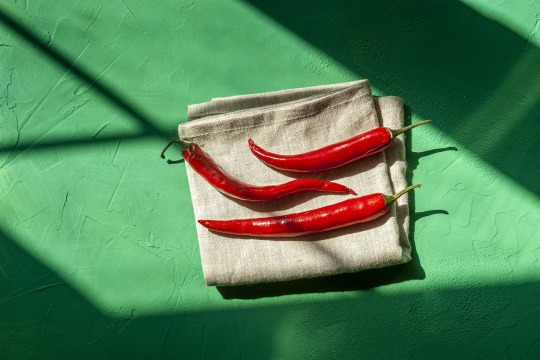
Experts say store-bought chilis are getting bigger and more mild—though other growers are breeding the spiciest peppers they can. Photograph By Ian Laker, Getty Images
Are Chili Peppers Getting Less Spicy? The Truth Is Complicated.
Jalapeños At The Supermarket Are Twice as Big As They Used To Be, And More Mild, One Expert Says.
— By Eric Alt | May 09, 2024
Hot chili peppers can illicit big reactions: flushing in the face and ears, panting, tearing up, sweating, and maybe even some swearing. Chilis are inherently dramatic—and even by its own standards, the peppers have had an explosive couple of years.
Severe climate conditions might cause another shortage of sriracha hot sauce after a lapse in 2022 for the same reason. In 2023, a product with a single tortilla chip made with two of the hottest peppers in the world was pulled from shelves “out of an abundance of caution,” though a 14-year-old’s family says he died after eating the chip. Meanwhile, over the last year or so, panic that peppers are being purposefully grown to be less spicy have been inflamed by conspiracy theorists.
On the other hand, certain farmers are pushing back on the alleged “weakening” of peppers by cultivating barely-fit-for-human-consumption levels of heat. There’s also the popularity of viral internet series like “Hot Ones,” where celebrities eat chicken wings basted in hotter and hotter sauces, and “hot” snack varieties that have grown to include Cinnefuego Toast Crunch and Carolina Reaper chocolate.
Regardless of whether you prefer milder peppers or boundary-pushing spice, it seems like there is less and less middle ground for the curious foodie. Do you have to settle for only mild or life-choice-questioning hot, with nothing in between? And is our understanding of a chili’s heat—largely through the 112-year-old Scoville measurement process—even accurate?

Heat Vs. Flavor
“There’s no denying things are going in two different directions,” says Ted Ballweg, chili farmer and owner of Savory Accents. There are two camps, he says: one that prefers flavor over heat, and the other pushing the limits of how spicy chilis can be.
For those of us noticing weaker chilis at the supermarket, something else might be at play. As food historian and novelist David DeWitt, known as “The Pope of Peppers,” points out, part of the reason is simple profit.
“Generally, the larger the chili, the milder it is,” says DeWitt. “These days, jalapeños are getting to be about six inches long, when they used to be about three. Farmers are deliberately breeding for larger pods because they get paid by the poundage. Larger chilis weigh more, so they get paid more.”
Brad Rubin, Agri-Food Institute sector manager at Wells Fargo, told the Food Institute that yes, peppers are getting bigger and less flavorful because larger, more consistently spicy peppers sell better in stores.
To be clear though, DeWitt says in his experience he hasn’t found products like sriracha (which uses very common serrano peppers) to be any less spicy than before.
Why The Scoville Scale Doesn’t Work
Pharmaceutical chemist and professor Wilbur Scoville developed the Scoville Organoleptic Test in 1912, and it remains the standard 112 years later. The problem is that it wasn’t a precise system then and hasn’t gotten any more so with age.
The Scoville test works through taste testers. They’re given a solution of capsaicin, the compound that makes chilis spicy, in sugar water. More and more water is added until the tester says they no longer feel the heat. The Scoville rating is the number of times required to dilute the solution to eliminate the heat—so a pepper with a Scoville rating of 10,000 means the solution needs to be diluted 10,000 times to be neutralized.

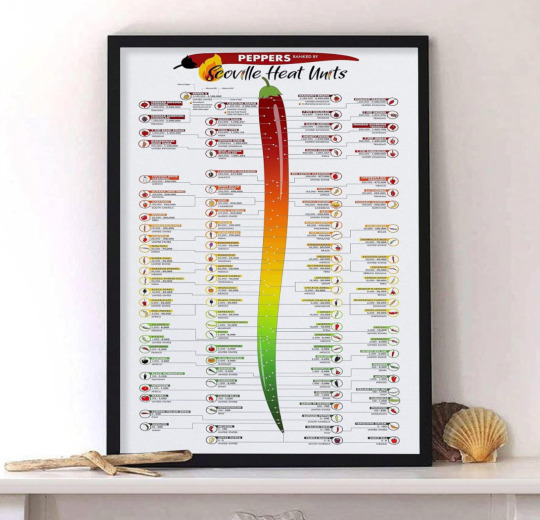
Wilbur Lincoln Scoville (1865 – 1942) was an American pharmacist known for his creation of the "Scoville Organoleptic Test", now standardized as the Scoville scale
Scoville tests have always depended on humans—and as anyone who has watched more than one episode of “Hot Ones” knows, sometimes you get someone who is completely unfazed by even the hottest sauces and sometimes you get someone who can barely get beyond mild without tearing up.
“That’s not very scientific, but it’s the only method we have,” Ballweg says. “All of our taste buds are different.”
Heat tolerance in people can be largely genetic, as shown in a 2012 study conducted by the University of Helsinki. Researchers took two sets of twins—one that shared the same genetic makeup (identical twins) and the other who had genetic distinctions (fraternal twins)—to measure their reactions to spicy foods. Their results suggest there are common genetic factors that can greatly impact a person’s response to spice—anywhere from 18 to 58 percent, with the rest determined by environmental factors.
Taking the human element out of the equation, heat level can vary a lot even within one species of chili pepper. Ballweg points to changes in their growing environment as a big factor. “Last year was a very hot, dry year here in Wisconsin…So the same pepper a year before that might have been 30,000 on the Scoville scale was now around 60,000 to 70,000. There are so many factors that can change a pepper’s heat level, in addition to subjective taste tests.”

More Options Than Ever Before
The mildest and hottest peppers get the most attention, so the concept of a “middle ground” may seem like a futile quest. But both Ballweg and DeWitt believe that you don’t have to settle for either defanged peppers or potentially toxic endurance tests.
Ballweg posts a Scoville Scale display at his market stands, so people can assess his peppers’ heat levels and find something that suits their tastes or intentions. “My suggestion is for folks to shop their local farmers markets for fresh chilis, because the farmers that grow them often have insight into heat and flavor profiles,” he says. “The bottom line for the consumer is ‘more varieties are better’—just ask questions to become enlightened about what suits you best. You have choices.”
With increased knowledge of and desire for more pepper flavor, peppers becoming less spicy might simply be a cultural shift. More ethnically and culinarily diverse food is available to and accepted by diners than ever before, and we’re all just...used to it.
“There’s definitely a bigger tolerance for spice than I’ve ever seen in my 70 years on the planet,” DeWitt says. “People travel more, they see more on TV, and have more opportunities to experience other culture’s cuisine.”
#Environment#Chilli Peppers 🌶️ 🫑#Jalapeños | Less Spicy | Hot 🥵 🌶️#Heat Vs. Flavor#The Scoville Scale#Agriculture#Spices#Urban Agriculture#Vegetables 🥗🥕🥦
0 notes
Text
Europe Food Coating Ingredients Market Share, Size, Trends, Growth Drivers, Business Challenges, Top Key Players, Future Opportunities and Forecast 2033: SPER Market Research
Food coating ingredients are substances used in food processing to enhance the flavor, texture, appearance, and shelf life of many food products. These materials are applied to the outside of food items through methods such as breading, enrobing, or battering. Food coatings frequently contain flours, starches, proteins, lipids, sugars, and leavening agents. They serve as a barrier to prevent oil from absorbing while frying, give food a crispy or crunchy texture, prevent food from drying out, and improve appearance. Food coating ingredients can be found in fried foods like fish fillets, chicken nuggets, and potato chips, as well as baked products like doughnuts and breaded pastries.
According to SPER market research, ‘Europe Food Coating Ingredients Market Size- By Type, By Application - Regional Outlook, Competitive Strategies and Segment Forecast to 2033’ state that the Europe Food Coating Ingredients Market is predicted to reach USD XX billion by 2033 with a CAGR of 5.68%.
Drivers: The food and beverage (F&B) business has experienced significant growth, leading to an increased demand for healthy ready-to-eat (RTE) and ready-to-drink (RTD) goods. As a result, it is now simpler to use food coating components to improve the organoleptic characteristics of processed, baked, fried, and consumer items. This is one of the primary drivers of the market's present expansion. Therefore, noteworthy technological advancements like the application of electrostatic coatings, which enhance the flavor, aroma, look, and shelf life of different food items by averting chemical reactions, are additional growth-inducing factors. The introduction of antimicrobial coatings, which halt the spread of illness and keep packaged items from rotting, is another factor driving market expansion.

Challenges: There are multiple challenges in the market for food coating components because of various factors. Maintaining innovation to adapt to changing dietary trends and customer preferences is one of the largest challenges. Manufacturers are under pressure from consumers to reformulate their goods to offer cleaner labels, more sustainable ingredients, and healthier options. Regulations mandating strict compliance measures with regard to food safety and labeling further complicate the situation.
Request For Free Sample Report @ https://www.sperresearch.com/report-store/europe-food-coating-ingredients-market.aspx?sample=1
The COVID-19 pandemic of 2020 has a significant impact on the expansion of the food coating components business in Europe. This is because the output of food coatings decreased as a result of the closure of multiple production sites. In addition, a change in expenses was noted in the affected region as a result of these closures; for example, the cost of sugar and cocoa rose, raising the price of the product. The outcome was a change in consumer purchasing patterns for food coating materials in the European market.
Additionally, some of the market key players are Cargill Inc., Ingredion Incorporated, Kerry Group PLC, Newly Weds Foods, Royal Avebe U.A., Tate & Lyle.
Europe Food Coating Ingredients Market Segmentation:
By Type: Based on the Type, Europe Food Coating Ingredients Market is segmented as; Sugars and Syrups, Cocoa and Chocolates, Fats and Oils, Spices and Seasonings, Flours, Batter and Crumbs, Others.
By Application: Based on the Application, Europe Food Coating Ingredients Market is segmented as; Bakery, Confectionery, Breakfast Cereals, Snacks, Dairy, Meat, Others
By Region: This research also includes data for UK, France, Germany, Italy, Spain, Rest of Europe.
This study also encompasses various drivers and restraining factors of this market for the forecast period. Various growth opportunities are also discussed in the report.
For More Information, refer to below link:-
Europe Food Coating Ingredients Market Outlook
Related Reports:
Frozen Chicken Market Size- By Type, By Product, By Distribution Channel- Regional Outlook, Competitive Strategies and Segment Forecast to 2033
Europe Ready-to-Eat Food Market Size- By Type, Distribution Channel- Regional Outlook, Competitive Strategies and Segment Forecast to 2033
Follow Us –
LinkedIn | Instagram | Facebook | Twitter
Contact Us:
Sara Lopes, Business Consultant – U.S.A.
SPER Market Research
+1-347-460-2899
#Food Coating Ingredients Market#Europe Food Coating Market#Europe Food Coating Ingredients Market#Europe Food Coating Ingredients Market Analysis#Europe Food Coating Ingredients Market Challenges#Europe Food Coating Ingredients Market Competition#Europe Food Coating Ingredients Market Demand#Europe Food Coating Ingredients Market Forecast#Europe Food Coating Ingredients Market Future outlook#Europe Food Coating Ingredients Market Growth#Europe Food Coating Ingredients Market Opportunity#Europe Food Coating Ingredients Market Overview#Europe Food Coating Ingredients Market Research Report#Europe Food Coating Ingredients Market Revenue#Europe Food Coating Ingredients Market segmentation#Europe Food Coating Ingredients Market Share#Europe Food Coating Ingredients Market Size#Europe Food Coating Ingredients Market Top Industry Players#Europe Food Coating Ingredients Market Trends
0 notes
Text
Driving Growth: Exploring Trends and Opportunities in the Food Stabilizer Market

Food Stabilizer Market is Anticipated to Witness High Growth Owing to Rising Demand for Convenience Food Products
Food stabilizers are additives that are added to processed food to maintain texture, stability and viscosity during production, storage and transportation of food products. They help to increase shelf life and improve organoleptic properties of food and beverages. Functions of food stabilizers include stabilizing emulsions, prevention of crystallization, moisture retention and thickening. Key types of food stabilizers include gelatin and pectin, carrageenan, xanthan gum, guar gum, locust bean gum, cellulose and starch. They find wide applications in dairy and dairy products, bakery, confectionery, convenience foods, meat and poultry products, beverages and others.
The Global Food Stabilizer Market is estimated to be valued at US$ 9.5 Billion in 2024 and is expected to exhibit a CAGR of 6.9% over the forecast period 2023 to 2030. Growing consumption of convenience and packaged food owing to changing lifestyles and increasing disposable income levels is a key factor driving growth of food stabilizer market globally. Food stabilizers help food manufacturers to provide better consistency, texture and stability to processed food products which enhance the organoleptic appeal. In addition, ability of stabilizers to extend shelf life of products is supporting their increased demand from food industry.
Key Takeaways
Key players operating in the Food Stabilizer Market are BASF SE, Cargill Inc., Celanese Corporation, Chr. Hansen A/S, DuPont, JEY'S F.I. INC, Kerry Group, Koninklijke DSM N.V, and The Archer Daniels Midland Company. These players are focusing on new product launches, expansions and mergers & acquisitions to gain competitive advantage in the market.
The food stabilizer market provides significant growth opportunities owing to rising consumption of convenience foods and beverages. Product innovation with development of novel stabilizers from natural sources is another key growth opportunity area.
Major global food stabilizer manufacturers are expanding their production facilities and distribution networks across developing regions of Asia Pacific, South America, Middle East and Africa to tap into high growth opportunities.
Market Drivers
Rising demand for convenience food products: Busy lifestyles and increasing number of working population has fueled demand for convenience food products which have stable consistency and extended shelf life. This is a key factor driving growth of food stabilizer market.
Market Restraints
Stringent regulations regarding usage of synthetic stabilizers: Regulatory authorities have imposed stringent regulations regarding usage of synthetic food stabilizers owing to potential health risks. This acts as a major challenge for market players.Segment Analysis
The food stabilizer market is segmented into natural and synthetic stabilizers. Natural stabilizers dominated the market and accounted for over 60% share in 2023. They are preferred by manufacturers due to rising consumer demand for clean label and natural ingredients. In natural stabilizers, polysaccharides based stabilizers such as xanthan gum, guar gum, and carrageenan have higher demand due to their ability to stabilize emulsions, foams, and suspensions. They are largely used in processed foods such as salad dressings and sauces.
Global Analysis
Regionally, Asia Pacific is the fastest growing market for food stabilizers. The growth can be attributed to expanding food processing industry in countries like China and India. Changing lifestyle and rising disposable income have increased the demand for packaged and convenience foods in the region. North America is the largest regional market. Stringent quality and safety regulations have increased the adoption of food stabilizer in the US and Canada. Key players are focused on producing clean label and organic stabilizers to tap opportunities in developed markets of North America and Europe.
0 notes
Text
Non-Thermal Pasteurization Market is set for a Potential Growth Worldwide: Excellent Technology Trends with Business Analysis
The non-thermal pasteurization which is also known as cold pasteurization can be defined as an alternative technology of food processing that entails highly efficient and sustainable processes to convert the items of raw food into the products that is suitable fort human intake. Non thermal pasteurization is different from the currently dominating thermal pasteurization methods because it does not expose the food to the elevated temperatures, thus by retaining the nutrition value which is essential, taste, appearance and other features of organoleptic, leading to the rising shelf life of food in a cost-effective manner
Free Sample Report + All Related Graphs & Charts @: https://www.advancemarketanalytics.com/sample-report/70010-global-non-thermal-pasteurization-market?utm_source=Organic&utm_medium=Vinay
Latest released the research study on Global Non-Thermal Pasteurization Market, offers a detailed overview of the factors influencing the global business scope. Non-Thermal Pasteurization Market research report shows the latest market insights, current situation analysis with upcoming trends and breakdown of the products and services. The report provides key statistics on the market status, size, share, growth factors of the Non-Thermal Pasteurization The study covers emerging player’s data, including: competitive landscape, sales, revenue and global market share of top manufacturers are Hiperbaric Espana (SPAIN), Avure Technologies (United States), Thyssenkrupp AG (Germany), Kobe Steel Ltd (Japan), Bosch (Germany), Chic Freshertech (United States), Elea Technology (Germany), Pulsemaster (Netherlands), Nordion (Canada), Multivac Sepp Haggenmuller SE & CO. KG (Germany), Stansted Fluid Powder Ltd (United Kingdom)
Thanks for reading this article; you can also get individual chapter wise section or region wise report version like North America, Europe or Southeast Asia.
0 notes
Text
Analyzing the Flavored Syrups Market: Drivers, Opportunities, and Trends
This Flavored Syrups market report has been prepared by considering several fragments of the present and upcoming market scenario. The market insights gained through this market research analysis report facilitates more clear understanding of the market landscape, issues that may interrupt in the future, and ways to position definite brand excellently. It consists of most-detailed market segmentation, thorough analysis of major market players, trends in consumer and supply chain dynamics, and insights about new geographical markets. The market insights covered in Flavored Syrups report simplifies managing marketing of goods and services effectively.
The flavored syrups market is expected to witness market growth at a rate of 4.55% in the forecast period of 2021 to 2028. Data Bridge Market Research report on flavored syrups market provides analysis and insights regarding the various factors expected to be prevalent throughout the forecast period while providing their impacts on the market’s growth.
Download Sample PDF Copy of this Report to understand structure of the complete report @ https://www.databridgemarketresearch.com/request-a-sample/?dbmr=global-flavored-syrups-market
Market Overview:
Flavored syrups refer to the type of syrups that include artificial and natural flavorings which are generally combined with water and sugar. Vanilla, chocolate, coffee, and fruit, among others are some of the flavored syrups that are available. These syrups are utilized for improving the organoleptic characteristics of the product. They are used in application such as confectionary, bakery, food and beverages.
Some of the major players operating in the Flavored Syrups market are Sensient Technologies Corporation, Kerry Inc., SensoryEffects, Inc., TATE & LYLE SUGARS., Toschi Vignola s.r.l., Archer Daniels Midland Company, Starbucks Corporation., The J.M. Smucker Company, MANE, Stirling Flavors, LLC, Malabar Food Products., W.T. Lynch Foods Limited, Midwest Syrup Company, RIO Syrup Company, Inc., Sonoma Syrup Co., AJWA FOOD PRODUCTS, Concord Foods, LLC, The Hershey Company, MONIN, and Torani, among other domestic and global players. Market share data is available for global, North America, Europe, Asia-Pacific (APAC), Middle East and Africa (MEA) and South America separately. DBMR analysts understand competitive strengths and provide competitive analysis for each competitor separately. among others.
Global Flavored Syrups Market Scope
The flavored syrups market is segmented on the basis of flavor, product type, flavor type and application. The growth among segments helps you analyze niche pockets of growth and strategies to approach the market and determine your core application areas and the difference in your target markets.
On the basis of flavor, the flavored syrups market is segmented into fruit, chocolate, vanilla, coffee, herbs & seasonings and other.
On the basis of product type, the flavored syrups market is segmented into natural and synthetic.
On the basis of flavors type, the flavored syrups market is segmented into fruit, chocolate, vanilla, coffee, herbs & seasonings and other.
On the basis of application, the flavored syrups market is segmented into beverages, dairy & frozen desserts, confectionery & bakery and food.
Browse More About This Research Report @ https://www.databridgemarketresearch.com/reports/global-flavored-syrups-market
Table of Content:
Part 01: Executive Summary
Part 02: Scope of the Report
Part 03: Global Flavored Syrups Market Landscape
Part 04: Global Flavored Syrups Market Sizing
Part 05: Global Flavored Syrups Market Segmentation By Product
Part 06: Five Forces Analysis
Part 07: Customer Landscape
Part 08: Geographic Landscape
Part 09: Decision Framework
Part 10: Drivers and Challenges
Part 11: Market Trends
Part 12: Vendor Landscape
Part 13: Vendor Analysis
Browse Trending Reports:
Middle East and Africa Medical Robots Market https://www.databridgemarketresearch.com/reports/middle-east-and-africa-medical-robots-market
Europe Platelet Rich Plasma Market https://www.databridgemarketresearch.com/reports/europe-platelet-rich-plasma-market
Asia Pacific Blood Screening Market https://www.databridgemarketresearch.com/reports/asia-pacific-blood-screening-market
Global Network Test Lab Automation Market https://www.databridgemarketresearch.com/reports/global-network-test-lab-automation-market
About Data Bridge Market Research:
An absolute way to predict what the future holds is to understand the current trend! Data Bridge Market Research presented itself as an unconventional and neoteric market research and consulting firm with an unparalleled level of resilience and integrated approaches. We are committed to uncovering the best market opportunities and nurturing effective information for your business to thrive in the marketplace. Data Bridge strives to provide appropriate solutions to complex business challenges and initiates an effortless decision-making process. Data Bridge is a set of pure wisdom and experience that was formulated and framed in 2015 in Pune.
Data Bridge Market Research has more than 500 analysts working in different industries. We have served more than 40% of the Fortune 500 companies globally and have a network of more than 5,000 clients worldwide. Data Bridge is an expert in creating satisfied customers who trust our services and trust our hard work with certainty. We are pleased with our glorious 99.9% customer satisfaction rating.
Contact Us: -
Data Bridge Market Research
US: +1 888 387 2818
United Kingdom: +44 208 089 1725
Hong Kong: +852 8192 7475
Email: – [email protected]
0 notes
Text
Discovering the Best Turkish Olive Oil
Turkey, a country known for its rich cultural heritage and diverse culinary traditions, has also become renowned for producing some of the finest olive oil in the world. Turkish olive oil, often praised for its exceptional quality, has a long-standing history that dates back thousands of years.
From its historical significance to its modern production techniques, Turkish olive oil has become a staple in every kitchen, both in Turkey and around the globe in many countries.
In this blog post, we will step into the vibrant world of Turkish olive oil, where ancient traditions merge with modern practices to produce a liquid gold renowned for its purity, aroma, and health benefits. Join us on this captivating journey as we explore the rich history of this culinary treasure of Turkish Olive Oil and its deep cultural significance, and sustainable practices.
What is Turkish Olive Oil?
Before we dive into the specifics, let's first understand what Turkish olive oil is. Olive oil, made from olives, is a natural oil derived from the fruit of olive trees, called Olea Europaea.
Turkish olive oil encompasses various grades, including extra virgin olive oil, virgin olive oil, and pure olive oil. Extra virgin olive oil, the highest quality grade, is extracted from olives using mechanical processes, without the use of heat or chemicals. Virgin olive oil is also made through mechanical processes but may have slightly higher acidity levels than extra virgin olive oil. Pure olive oil, on the other hand, is a blend of extra virgin olive oil and refined olive oil, making it suitable for various cooking purposes.
History of Turkish Olive Oil
The history of Turkish olive oil can be traced back to ancient times, with the cultivation of olive trees and the production of olive oil deeply ingrained in Turkish culture. Olive trees, native to the Mediterranean region, flourished on Turkish soil, yielding a bountiful harvest of Turkish olives. As early as 2500 BC, the ancient inhabitants of Anatolia were already producing olive oil, making it one of the oldest agricultural products in the region.
Over the centuries, Turkish olive oil production evolved, embracing modern techniques while preserving traditional methods. Turkey stands as a global leader in olive oil production. Its vast olive groves, sprawling over 1.8 million hectares, stretch from the Aegean shores to the mineral-rich soils of Anatolia. This impressive landscape plays host to over 170 million olive trees, meticulously cared for by generations of experienced farmers and olive oil producers such as Artem Oliva and Taris.
The secret to this success of Turkish Olive Oil lies in careful selection and modernized harvesting methods. Turkish farmers have gained their skills over centuries, ensuring only the finest olives make their way into olive oil production. This commitment to quality shines through in the final product, renowned for its distinctive aromas, unique flavors, and exceptional health benefits. Of course, the most important specification of Turkish olive oil is its organoleptic feature.
The Significance of Olive Oil in Turkish Culture
Olive oil holds deep cultural significance in Turkish cuisine and traditions. Turkish olive oil brands have garnered international recognition, standing as ambassadors of the country's culinary heritage. Beyond its use in cooking, olive oil plays a prominent role in traditional Turkish rituals, a symbol of health, purity, and abundance.
Within the rich tapestry of Turkish cuisine, olive oil plays a pivotal role, adding both depth of flavor and a distinctive healthfulness to numerous iconic dishes. Perhaps the most renowned are the delectable "zeytinyağlı yemekler" literally translated as "olive oil dishes."
These vegetarian offerings showcase the versatility of olive oil, featuring seasonal vegetables like artichokes, zucchini, green beans, and eggplant, carefully braised and seasoned to perfection. Stuffed grape leaves ("yaprak sarması"), bathed in aromatic olive oil, offer a delightful combination of textures and flavors, while creamy "hummus" often receives a drizzle of olive oil for both aesthetic and flavorful enhancement.
Main courses like "imam bayıldı," stuffed aubergines cooked in olive oil, and "manti," dumplings infused with its richness, exemplify the intricate culinary techniques employed in Turkish cuisine. Beyond savory dishes, even traditional desserts like "lokma," deep-fried dough bites drizzled with honey and sprinkled with sesame seeds, often incorporate olive oil for a subtle depth of flavor. Notably, olive oil's presence extends beyond its culinary functions, serving as a symbol of hospitality and health within Turkish culture. This unique combination of cultural significance, versatility, and health benefits solidifies olive oil's position as a cornerstone ingredient in the vibrant and diverse landscape of Turkish gastronomy.
Sustainability Practices in the Turkish Olive Oil Industry
In recent years, sustainability has become a key focus in olive oil production, and Turkish olive oil companies are at the forefront of implementing environmentally friendly practices. Recognizing the importance of preserving the natural ecosystem, these companies prioritize sustainable agricultural practices, ensuring the longevity of olive trees and the quality of Turkish olive oil.
The Aegean coast of Turkey, renowned for olive oil production, upholds sustainable harvesting methods, promoting biodiversity and minimizing environmental impact. Olive oil companies in Turkey, such as Artem Oliva, adhere to international standards, employing efficient production techniques that reduce energy consumption and waste. By utilizing renewable energy sources, optimizing water usage, and implementing organic farming methods, Turkish olive oil production supports the preservation of the Mediterranean ecosystem.
These sustainability practices not only benefit the environment but also contribute to the high quality of Turkish olive oil. By choosing sustainably produced Turkish olive oil, consumers not only enjoy a superior product but also support a greener and more responsible olive oil industry.
Importance of Olive Trees in Turkey
Olive trees play a crucial role in shaping the agricultural landscape of Turkey. With their extensive presence, olive trees contribute to the richness and diversity of Turkey's flora and fauna, fostering biodiversity. These majestic trees, some of which are centuries old, grace the vast Turkish countryside, bestowing upon it an unparalleled beauty.
The cultivation of olive trees has not only shaped Turkey's agricultural practices but also influenced its cultural heritage. Olive farming has contributed to the economic growth of rural communities, providing livelihoods for many generations of Turkish olive growers. The olive trees of Turkey are revered for their resilience, adaptability, and their ability to produce olives of exceptional quality, making them an indispensable part of the Turkish agricultural legacy.
The Agricultural Influence
Olive trees have a significant agricultural influence in Turkey, particularly in the production of Turkish Olive Oil and table olives. Turkish table olives, appreciated for their distinct flavors and textures, are a delicacy enjoyed both locally and internationally. The Aegean coast of Turkey, blessed with its mild climate, fertile soils, and abundant sunshine, provides an ideal environment for olive cultivation and the production of high-quality table olives.
The olive cultivation process involves careful management of olive trees, from pruning to irrigation, ensuring optimal conditions for growth. Turkish olive growers, utilizing traditional and modern techniques, cultivate olive trees with precision, resulting in high yields of olives that are ideal for oil extraction or table olive production.
Turkey's agricultural landscape, dotted with olive groves, is a testament to the country's commitment to olive cultivation and its influence on Turkish agriculture. Olive trees, deeply rooted in Turkish culture, continue to shape the agricultural traditions of the country, fostering economic growth and preserving the natural beauty of the Turkish countryside.
The Economic Impact
The olive industry has a significant economic impact on Turkey, contributing to the country's economic growth and international trade. Turkish olive oil and olive products, renowned for their quality, are in high demand both domestically and abroad.
Turkey, as a major exporter of olive oil, caters to international markets, including countries such as South Korea, Italy, France, and Spain. Turkish olive oil exports have surged in recent years, with Turkey being a member of the International Olive Council, further solidifying its position in the global olive oil market.
The success of Turkish olive oil can be attributed to the dedication of Turkish olive oil companies, olive growers, and the adherence to international standards of production. The olive oil industry in Turkey provides employment opportunities, sustains the livelihoods of many, and contributes significantly to the country's international trade and economic prosperity.
The Modern Production Techniques
Modern production techniques have revolutionized olive oil production, enhancing efficiency while preserving the purity and quality of Turkish olive oil. The Turkish olive oil production process encompasses various stages, from harvesting the olives to packaging the final product, with each step blending traditional methods with advancements in modern technology.
The use of modern machinery, such as state-of-the-art pressing mills, extraction systems, and centrifuges, ensures the highest extraction efficiency, allowing Turkish olive oil producers to maximize oil yield without compromising quality. From the delicate harvesting of olives to the extraction process, Turkish olive oil production embraces innovation, resulting in a product that captures the essence of Turkish olives.
Harvesting the Olives
The harvesting of olives plays a crucial role in Turkish olive oil production, influencing the quality and flavor of the final product. Turkish olive growers employ both traditional and modern harvesting methods, adapting to the unique characteristics of different olive varieties.
Harvesting is typically done in autumn when olives are ripe and ready for picking. Turkish olive growers often prioritize early harvest, harvesting olives at the initial stage of maturity, to ensure the highest quality of oil. Hand-picking, a labor-intensive process, remains the preferred method, allowing for careful selection of olives and preventing any damage to the fruit.
The delicate process of harvesting olives, carried out with precision and care, sets the foundation for producing exceptional Turkish olive oil, capturing the essence of the olives grown under the Turkish sun.
Processing and Pressing for Oil
Once the olives are harvested, they undergo processing and pressing to extract the oil. Turkish olive oil production emphasizes the importance of quality extraction methods, such as cold pressing, to preserve the purity and flavor of the olives.
The extraction process involves crushing the olives into a paste, followed by the separation of oil, water, and solids. Cold pressing, a traditional method, ensures that the olives are pressed at low temperatures, maintaining the highest quality of Turkish olive oil. The first press of the olives, known as extra virgin olive oil, is considered the highest quality grade, known for its superior taste, aroma, and health benefits.
Turkish olive oil production embraces this traditional technique, combined with innovative machinery, ensuring the purity, quality, and nutritional value of Turkish olive oil.
Packaging and Preservation
The packaging and preservation of Turkish olive oil are critically important in maintaining its quality, freshness, and premium taste. Turkish olive oil is often packaged in glass bottles, which protect it from light, oxygen, and temperature fluctuations, helping to preserve its alluring aroma and flavor.
Packaging plays a vital role in safeguarding the antioxidants, polyphenols, and other beneficial components of the olive oil. Turkish olive oil producers adhere to high packaging standards, employing various preservation methods, such as nitrogen flushing, to minimize oxidation and preserve the quality of the oil.
By choosing glass packaging and employing meticulous preservation techniques, Turkish olive oil producers ensure that consumers can enjoy the full benefits, flavor, and freshness of Turkish olive oil, straight from the bottle.
Understanding the Quality of Turkish Olive Oil
When it comes to Turkish olive oil, quality is of paramount importance. Turkish olive oil, known for its exceptional quality, meets stringent standards of production, ensuring the highest level of purity, taste, and nutritional value.
Several factors contribute to the quality of Turkish olive oil, including acidity level, peroxide value, and sensory analysis. Turkish olive oil producers meticulously monitor these factors, employing quality assurance measures to maintain the high standards that Turkish olive oil is renowned for.
Discerning consumers can recognize high-quality Turkish olive oil by carefully reading labels, and looking for indicators such as "extra virgin" or "Award-Winning Turkish Olive Oil." Additionally, a taste profile characterized by a balanced, smooth, and fruity flavor is a testament to the quality of the olive oil, allowing consumers to enjoy the pure essence of Turkish olives.
Factors Affecting the Quality
Various factors influence the quality of Turkish olive oil, with acidity level, peroxide value, and sensory analysis being crucial parameters considered during production.
Acidity level indicates the quality and purity of olive oil, with lower acidity levels signifying a higher quality grade. Turkish olive oil, particularly extra virgin olive oil, has exceptionally low acidity levels, often below 0.8%.
Peroxide value, a measure of oxidization, provides valuable insights into the freshness of olive oil. Turkish olive oil, due to its careful production process, typically has low peroxide values, indicating its superior quality.
Sensory analysis, involving the evaluation of aroma, taste, and texture, is another key element in assessing the quality of Turkish olive oil. Trained sensory panels analyze samples of olive oil, ensuring that it meets the highest standards of olfactory and gustatory excellence.
By considering these quality factors, Turkish olive oil producers maintain their commitment to delivering olive oil of the highest quality, ensuring that consumers can savor the pure, flavorful, and healthful properties of Turkish olives.
The Thriving Export Industry of Turkish Olive Oil
The Turkish olive oil industry has experienced substantial growth, establishing itself as a major player in the international olive oil market. Turkish olive oil's superior quality, rich taste, and health benefits have made it highly sought after in the global market.
Turkey exports olive oil to various international destinations, including South Korea, Italy, France, and Spain, among others. Turkish olive oil's global popularity can be attributed to its exceptional quality, which has captured the attention of olive oil enthusiasts, chefs, and health-conscious individuals alike.
With a rise in international demand, the Turkish olive oil export industry continues to thrive, promoting trade between countries, strengthening global connections, and showcasing Turkey's commitment to producing olive oil of the highest caliber.
In the 2023/2024 crop year, Turkish olive growers and oil producers experienced a weak harvest due to unfavorable weather conditions during the blossoming period. Cold and rainy spring weather damaged olive trees, leaving many barren and impacting fruit sets. This came after a record-high yield of 421,000 tons in the previous year, making the potential decline even more concerning. Farmers in various regions, particularly Izmir, Aydin, and Manisa, reported significant losses due to hail and heavy rains. Experts and producers expressed concerns about the economic impact of the lower harvest, impacting both domestic consumption and exports. However, there is optimism for the 2024/2025 season, with positive expectations for a higher yield.
The Rise in Global Demand
The rise in global demand for Turkish olive oil can be attributed to several factors, including its health benefits, culinary trends, and increasing international awareness of its quality.
Health-conscious consumers are seeking natural and healthier alternatives, and Turkish olive oil, with its high content of monounsaturated fatty acids, antioxidants, and polyphenols, perfectly fits the bill. Scientific studies highlighting the health benefits of olive oil have further increased its global demand, spurring the interest of individuals focusing on their overall well-being.
Culinary trends, that emphasize fresh and flavorful ingredients, have also contributed to the growing international demand for Turkish olive oil. As chefs and home cooks explore new flavors and experiment with different cuisines, Turkish olive oil offers a rich and versatile option, enhancing dishes and elevating taste profiles.
The international demand for Turkish olive oil continues to surge, with countries around the world recognizing its exceptional quality, health benefits, and distinctive flavors. Turkish olive oil has become a cherished ingredient in kitchens worldwide, adding a touch of sophistication and Mediterranean charm to culinary creations.
Conclusion
In conclusion, Turkish olive oil stands out for its rich history, cultural significance, sustainable practices, diverse types of olives, modern production techniques, and exceptional quality. The thriving export industry and its popularity in kitchens worldwide reinforce its reputation as one of the best olive oils available. When it comes to cooking, Turkish olive oil adds a distinct flavor and aroma to dishes while providing numerous health benefits. To experience the excellence of Turkish olive oil, get in touch with us and explore our range of high-quality products. If you want to explore Turkish Olive Oil better and further contact with Artem Oliva team!
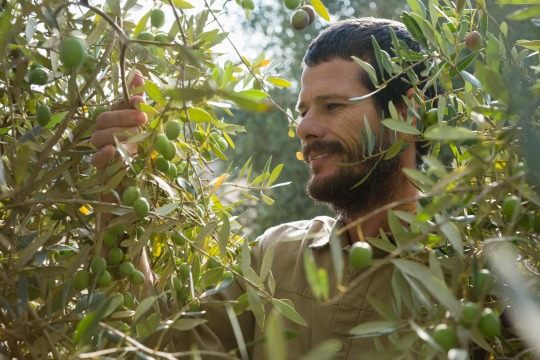
0 notes